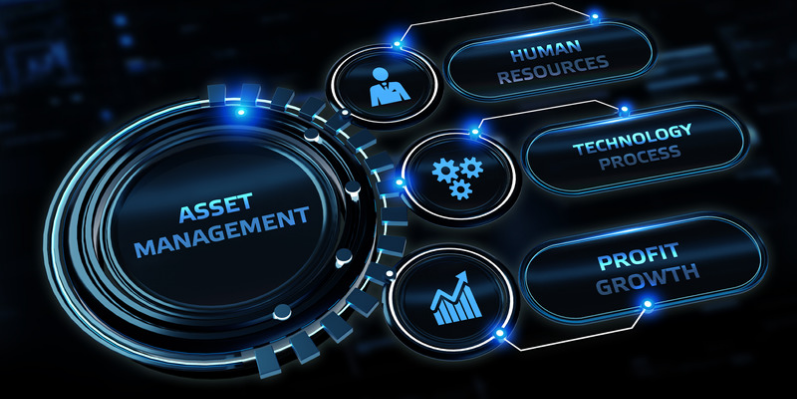Challenges associated with EAM implementation and the way forward

Although asset management is not a new idea, it has significant implications for enterprises. When properly implemented, asset management addresses the most important issues affecting a business and enables more sustainable growth.
A successful company management plan must include asset management as a crucial component. However, it’s often disregarded as a boring activity and less importance is attached. And this perception can be perilous to an organization.
Any successful organization must have effective asset management since it benefits the company and its stakeholders.
Therefore, in this article, we’ll discuss the following:
- The meaning of EAM
- Why is EAM important?
- Challenges associated with EAM implementation and the way forward
- How can EAM software solutions help?
The meaning of EAM
EAM in full is enterprise asset management. It is mostly employed in the manufacturing industry, and companies that deal with complex and expensive physical assets, such as autos, refineries, and heavy machinery.
So, EAM can be defined as the process of overseeing the lifespan of physical assets in order to optimize their utility, lower costs, enhance performance and reliability, and uphold environmental, public health, and safety standards.
However, we are gradually leaving the era of executing EAM with paperwork and spreadsheets, a specialized software called EAM software is more commonly used now.
Why is enterprise asset management important?
Companies that rely on assets spend huge amounts of money procuring, installing, maintaining, and replacing structures, mechanical assets, and other fixed assets.
Seamless utilization and mobilization of assets is the foundation of success for the majority of organizations despite the high cost of asset-related expenses. As a result, a manager has a heavy burden in making sure that all machinery and equipment function properly.
However, when it comes to implementing predictive maintenance and asset management strategies across the supply chain, Industry 4.0 has the potential to completely transform the game.
Industry 4.0 makes it possible to quickly collect crucial data regarding the operation of a machine or piece of equipment.
According to a recent study, 55% of manufacturers now leverage this data to employ actionable, real-time, role-based data for asset management decision-making, with another 28% aiming to do so within the next year.
Here are 3 significant advantages of the EAM software:
Forecast future issues in assets
Some potential asset issues may affect your organization’s smooth operations, data analytics models that identify these issues can be embedded in EAM software. To ensure uninterrupted operations, asset managers utilize the applicable information generated by these models to provide preventive measures.
To determine the probability of failure or critical risk in an asset, these models can be powered with the data collected from different data-rich locations for predictive maintenance. This makes it easier for managers to combine knowledge, build up service teams, and assemble the resources needed for preventive maintenance.
Enhance asset efficiency and durability
EAM software guarantees your asset distribution’s reliability and longevity even in the face of adverse operational circumstances. By incorporating risk management strategies that maintain your asset in good condition from installation to renewal, the condition-based analysis of your asset can help asset managers in maximizing the ROI. The productivity, performance, durability, and quality of your asset can be optimized, enabling you to get the most out of it until it is almost completely depleted.
Facilitates efficiency in your team
Due to inefficient operations, maintenance and asset managers often experience delays and additional expenses. Your team cannot perform at its peak if you continue to handle the bulk of your operations using paper and spreadsheets.
You can utilize EAM software to remove the bottlenecks and enable your team to perform at their full potential, rather than struggling to improve the work order completion rate and other important maintenance variables.
Challenges associated with EAM implementation and the way forward
Now, we’ll discuss the focus of this article. Here are some challenges that affect EAM implementation and the solutions:
Strategic execution challenges
For an organization to function properly, it is quite important for the major stakeholders and employees to discuss the strategy, objectives, and roles of asset management for the progress of their organization.
Before the EAM software is implemented, everyone must be carried along and updated. However, the majority of organizations fail to put this into consideration, which creates a chaotic environment.
Way forward
You can follow these steps to ensure strategic execution:
- Examine the organization structure.
- Self-evaluate your asset management.
- Identify the goals and regulations for asset management.
- Establish and carry out an action plan for asset management.
- Review and measure progress.
- Obtain feedback from stakeholders.
Inconsistent data
The more data asset managers collect, the higher the potential for errors and discrepancies that must be corrected. So, human intervention is needed to correct these errors before they can be utilized to provide valuable insights.
Information coming in from various sources may not be compatible, this is due to the absence of widely accepted data standards throughout the asset management business and its data suppliers.
Data is the essential information source that links all process control. Increased wrench time, poor asset value chain management, unexpected downtime, erroneous procurement, and inefficient maintenance programs are just a few of the many issues brought on by data inconsistency.
Way forward
There must be two phases to the solution to this. First, in order to create a single “golden source” of data for an organization, asset managers must put more effort to establish standards for both internal and external partners.
Also, to minimize the need for human interference, they have to build an automated response to issues.
Unforeseen expenses
Asset managers are aware that data management may be costly, but the outside expenditures, such as licenses, software, hardware, and so on, are just the tip of the iceberg. Unforeseen expenses are obstacles to many organizations when they realize that they need more human resources and technological resources than they expected.
Way forward
To obtain a financial picture that helps you make the most cost-effective decisions, it’s essential to examine the complete cost of assets in your business, from original purchase through operations, financing, repairs, and maintenance, to resale.
By doing this, asset management strengths can be taken advantage of, and inadequacies can be fixed. You will have a better knowledge of everything from purchasing to disposing of equipment if you dig deeper into the prices, maintenance overheads, labor, components, etc.
Complex enterprise workflows
Workflows in the workplace are difficult and time-consuming. This results from the complicated way that most enterprises utilize their asset infrastructure. Big or small assets are often distributed across many locations, offices, and databases.
Way forward
The assets, databases, and software programs that each of these departments uses separately should ideally be connected to make the whole process more simple. Each project’s progress is monitored and the necessary teamwork is supported.
You should understand that simple spreadsheets make it very hard to maintain a comprehensive perspective of asset utilization, maintenance, and client demand forecasting.
How can EAM software solutions help?
To make sure justice is done to the concept of EAM, it is crucial to emphasize the role of EAM software in overcoming the challenges associated with asset management. Of course, the EAM software will not solve all the problems you encounter as an asset manager, but the EAM software solutions we offer at INTEC Digital Solutions will surely be a game changer for asset management in your organization.
We offer great and unique EAM software solutions, here are some of them:
Customizable asset management software
Workflow is already a complicated process, and the last thing that enterprises want to deal with is an asset-tracking system that makes asset management more difficult for them.
The ideal software should be user-friendly and adaptable to the specific processes of the organization. The majority of capable asset monitoring systems include specialized connections with business apps of your choice, this makes it easier to streamline operations and departmental communication.
Scalable asset-management software
Companies usually have their resources distributed across the globe. These are made up of both labor and financial resources. This means a whole lot of data to be managed.
Hence, organizations require software solutions with infinite storage, processing, and management capabilities.
Asset management software with SLA Management
SLA management refers to the monitoring of server-level agreements. This helps to optimize machinery uptime in operations because it supports high performance and low latency.
Asset management software on your mobile
Mobile device usage is gradually replacing desktop use, and in the years to come, this trend is expected to accelerate. Therefore, you want asset-management software that can be used on smartphones and tablets that is compatible with both iOS and Android.
Your employees can utilize asset management software from anywhere because of its mobility. Even when your employees are on the move, it optimizes your operational control.
Wrapping it up!
As the concept of EAM is now becoming more of a science than the art it used to be, it is quite imperative to note that asset management should be data-driven.
The emergence of big data has transformed enterprise asset management. In the past, asset managers primarily relied on intuition and experience concerning their fixed and information assets, but now, they have access to a vast array of data sets that can be used to inform decision-making.
According to research by BNY MELLON, 97% of asset managers are planning to explore outsourced data management infrastructure in the next 3 years.
To learn more about data-driven enterprise asset management, CLICK HERE.
#maintenance #industry4 #Software #EAM #assetmanagement



